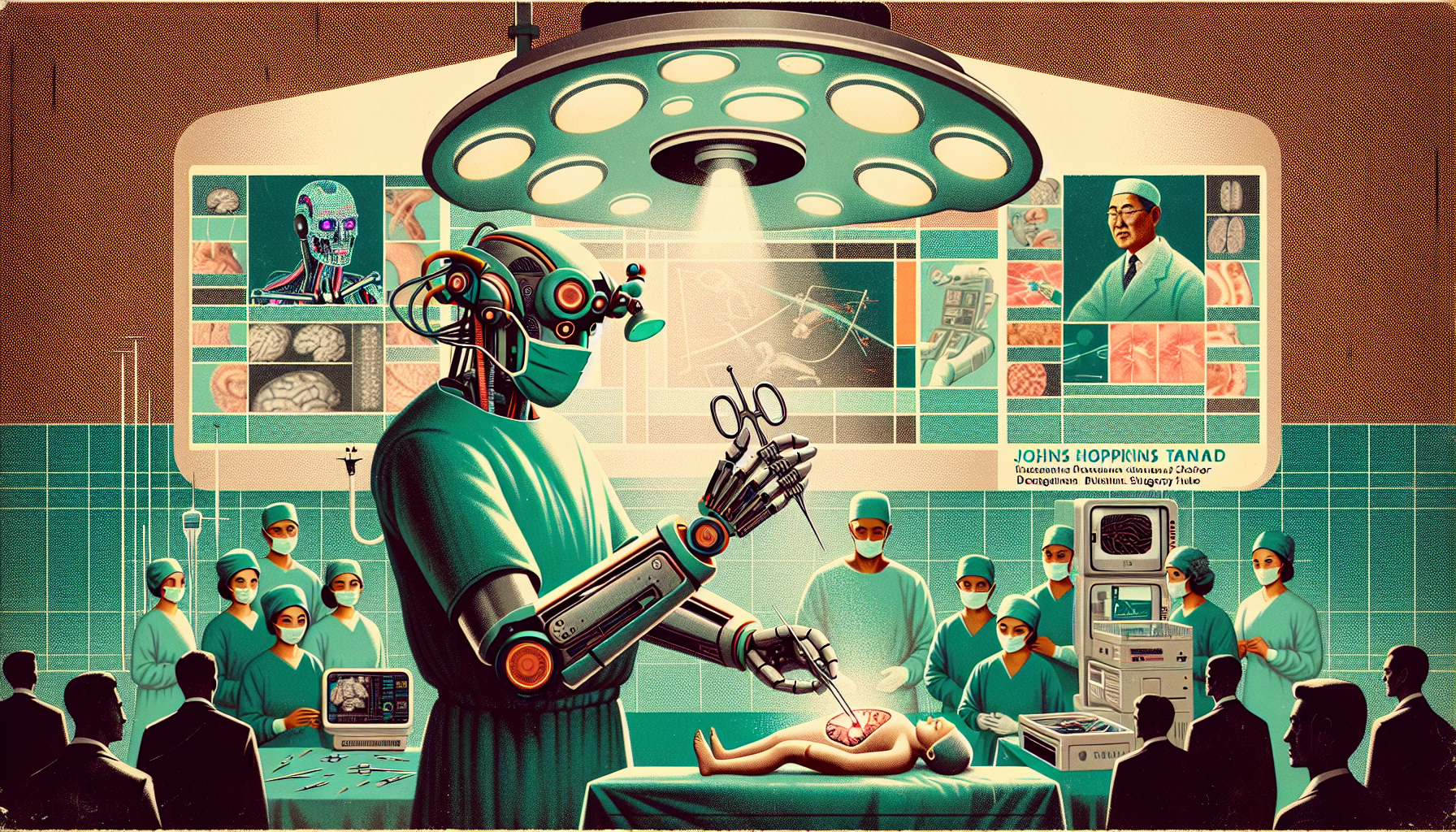In a remarkable leap in medical technology, researchers from Johns Hopkins University and Stanford University have achieved a significant breakthrough: they’ve taught a robot to perform surgery with the same skill as human doctors, simply by having it watch surgery videos.
Imitation Learning: A New Approach
At the core of this innovation is a method called imitation learning. This approach teaches the robot by having it observe and mimic the actions of skilled surgeons. The team employed the da Vinci Surgical System, an advanced robotic setup typically used under human control, to educate the robot. This system features robotic arms capable of handling various surgical tasks like dissection, suction, cutting, and sealing vessels.
The Power of Video-Based Training
The training process involved providing the AI with numerous video recordings captured from wrist cameras on the da Vinci robots during real surgeries. This visual data was crucial for the robot to learn the complex movements involved in surgery. The AI model, which blends imitation learning with machine learning techniques akin to those in popular AI systems like ChatGPT, transforms these videos into exact robotic actions.
Precision and Independence in Action
Once trained, the robot showed exceptional skill in executing basic surgical tasks, such as manipulating needles, lifting tissue, and suturing. Remarkably, it not only matched the skill level of human surgeons but could also rectify its mistakes independently. If the robot dropped a needle, for example, it could pick it up and proceed with the task without needing external help.
Revolutionizing Medical Training and Patient Care
This advancement carries profound implications for surgical training and patient care. Traditionally, programming surgical robots involves painstakingly coding each step, a method that is both time-consuming and error-prone. However, this innovative technique allows robots to learn a broad spectrum of procedures swiftly, potentially reducing errors and boosting the accuracy of surgeries. Axel Krieger, an assistant professor at Johns Hopkins University, believes this development could help realize the dream of autonomous surgery far sooner than previously thought.
Broadening AI’s Role in Healthcare
The use of AI in medical training and procedures reflects a broader movement where AI is reshaping many facets of healthcare. From optimizing medical training to enhancing diagnostic skills and streamlining operations, AI is making a noticeable impact. For instance, advanced AI models are being developed to detect cardiovascular diseases earlier by analyzing sophisticated medical images. Furthermore, AI helps automate administrative duties, ease the burden on doctors, and improve healthcare access, especially in regions facing clinician shortages.
Prospects for AI in Medicine
The possibilities of AI in surgery reach beyond mere operations. As advancements continue, AI is set to empower healthcare providers by offering crucial insights and support in patient care. The American Medical Association advocates for using technology to complement rather than replace human expertise, envisioning a future where AI systems serve as partners in making high-level decisions and improving patient interactions.
In conclusion, this pioneering step of teaching a robot to perform surgery by watching veteran surgeons marks a pivotal moment in integrating AI into medical practices. This innovation not only promises to enhance the precision and safety of surgeries but also highlights the transformative power of AI in healthcare, paving the way for a new era of medical excellence.

Leave a Reply